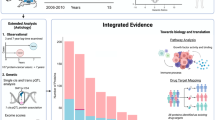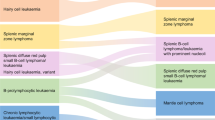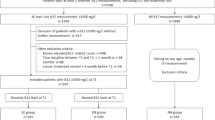Abstract
IT has been mentioned in these columns1 that the polarographic wave produced on the current-voltage curve by sulphydryl or disulphidic groups of serum proteins can be used to distinguish between normal and carcinomatic serum. In the case of cancer the height of this characteristic protein wave is always found a little lower than that in the normal serum. However, when the sera are treated with alkali hydroxide, the height of the protein wave increases in the carcinomatic serum less than in the normal serum. Thus the differences between them are considerably increased. This circumstance has to be ascribed to the liberation of sulphydryl or disulphidic groups of serum proteins as the result of their alkaline denaturation. (Cf. Mirsky and Anson2.)
This is a preview of subscription content, access via your institution
Access options
Subscribe to this journal
Receive 51 print issues and online access
$199.00 per year
only $3.90 per issue
Buy this article
- Purchase on Springer Link
- Instant access to full article PDF
Prices may be subject to local taxes which are calculated during checkout
Similar content being viewed by others
References
NATURE, 139, 330 (1937).
Mirsky, A. E., and Anson, M. L., J. Gen. Physiol., 19, 427 and 439 (1936).
Brdika, R., Collection, 5, 238 (1933).
Mirsky, A. E., and Anson, M. L., J. Gen. Physiol., 18, 307 (1935).
Author information
Authors and Affiliations
Rights and permissions
About this article
Cite this article
BRDIKA, R. Polarographic Investigations in Serological Cancer Diagnosis. Nature 139, 1020–1021 (1937). https://doi.org/10.1038/1391020a0
Issue Date:
DOI: https://doi.org/10.1038/1391020a0
This article is cited by
-
Application of the modified polarographic Brdička method for cancer testing
Journal of Solid State Electrochemistry (2013)
-
Polarographische und elektrophoretische Untersuchungen verfl�ssigter Geschw�lste
Die Naturwissenschaften (1955)
-
The nature of Brdička's cancer test
Experientia (1955)
-
the Prague Sero Reactions for Cancer
Nature (1938)
-
Polarographic Research on Cancer
Nature (1938)
Comments
By submitting a comment you agree to abide by our Terms and Community Guidelines. If you find something abusive or that does not comply with our terms or guidelines please flag it as inappropriate.



